Beyond the Headlines Understand Today’s world news to Navigate Tomorrow’s Challenges and Secure Your
- Beyond the Headlines: Understand Today’s world news to Navigate Tomorrow’s Challenges and Secure Your Future.
- The Shifting Landscape of Global Reporting
- The Impact of Geopolitical Events on News Coverage
- The Role of Technology in Disseminating Misinformation
- The Importance of Media Literacy
- Navigating the Challenges and Securing Your Future
Beyond the Headlines: Understand Today’s world news to Navigate Tomorrow’s Challenges and Secure Your Future.
In an era defined by instant communication and global interconnectedness, staying informed about world news is no longer a matter of simple curiosity, but a crucial necessity. The constant flow of information, ranging from political upheavals to economic shifts and social movements, shapes our understanding of the world and impacts our daily lives. Access to reliable and unbiased news sources is paramount, allowing individuals to form informed opinions and participate meaningfully in democratic processes. This article delves into the importance of staying current with global events, the challenges associated with navigating the modern news landscape, and strategies for becoming a well-informed and engaged global citizen.
The sheer volume of information available today can be overwhelming. Traditional media outlets such as newspapers and television news programs are now complemented – and often challenged – by a vast array of online sources, including social media platforms, blogs, and independent news websites. While this proliferation of information offers unprecedented access to different perspectives, it also presents challenges in discerning fact from fiction, identifying bias, and avoiding the spread of misinformation. The media landscape is fractured, and echo chambers often reinforce existing beliefs rather than fostering critical thinking.
The Shifting Landscape of Global Reporting
The methods of delivering global events have undergone a dramatic transformation in the 21st century. Traditionally, the dissemination of world news was largely controlled by established news organizations with extensive networks of journalists stationed around the globe. These organizations, with their commitment to journalistic standards and fact-checking procedures, played a vital role in providing comprehensive and reliable coverage of international affairs. However, the rise of the internet and social media has disrupted this established order. Citizen journalism, while offering diverse voices and on-the-ground perspectives, often lacks the rigorous editorial oversight of traditional news outlets.
Furthermore, the financial pressures facing the journalism industry have led to cuts in newsroom staffing and resources. Investigative journalism, which is essential for holding power accountable, is often the first casualty of these cuts. This decline in investigative reporting has created a vacuum that has been filled, in part, by partisan media outlets and online platforms that prioritize sensationalism and clickbait over accuracy and objectivity. The result is a more fragmented and polarized media landscape, where audiences are increasingly exposed to information that confirms their pre-existing beliefs.
To illustrate the evolution of news consumption, consider this table showcasing the changing trends in media usage:
| Newspapers | 49 | 25 |
| Television News | 58 | 42 |
| Online News Websites | 35 | 68 |
| Social Media (News) | 20 | 55 |
The Impact of Geopolitical Events on News Coverage
Major geopolitical events consistently shape the focus and tone of world news coverage. Conflicts, economic crises, and natural disasters often dominate headlines, drawing attention to specific regions and issues while leaving others underreported. For example, ongoing conflicts in the Middle East, Ukraine and Sudan receive extensive coverage, while humanitarian crises in Africa and Asia might receive less attention. This selective coverage can influence public perceptions and shape foreign policy decisions. It’s important to recognize that news organizations, like any institution, are subject to biases, whether conscious or unconscious, that can influence their reporting. These biases can stem from political ideologies, national interests, or even the demographics of the newsroom staff.
The coverage of economic events also deserves careful scrutiny. Financial markets are highly sensitive to news developments, and media reports can have a significant impact on investor confidence. The reporting on economic indicators, such as inflation, unemployment, and GDP growth, can be particularly influential. It’s crucial for consumers of economic news to understand the economic concepts being discussed and to consider the potential biases of the source. A focus on short-term market fluctuations can distract from long-term economic trends and challenges.
Consider these common types of biases to be aware of when consuming global news:
- Confirmation Bias: Seeking out information that confirms existing beliefs.
- Selection Bias: Focusing on certain stories while ignoring others.
- Framing Bias: Presenting information in a way that influences how it is interpreted.
- Sensationalism: Exaggerating stories to attract attention.
The Role of Technology in Disseminating Misinformation
The rapid advancement of technology has created new opportunities for the spread of misinformation and disinformation. Social media platforms, in particular, have become breeding grounds for fake news, conspiracy theories, and propaganda. The algorithms that govern these platforms often prioritize engagement over accuracy, amplifying sensational and emotionally charged content, regardless of its veracity. This creates an echo chamber effect, where users are primarily exposed to information that confirms their existing beliefs, reinforcing their biases and making them less receptive to alternative perspectives. The proliferation of deepfakes — manipulated videos that appear authentic — further complicates the task of distinguishing fact from fiction.
The anonymity afforded by the internet also contributes to the spread of misinformation. Individuals and organizations can create fake accounts and use them to spread false information without fear of accountability. The sheer volume of information circulating online makes it difficult for fact-checkers to keep up, and even when false information is debunked, it can continue to circulate widely, especially within closed online communities.Combating misinformation requires a multi-faceted approach that involves media literacy education, fact-checking initiatives, and the development of algorithms that prioritize accuracy and transparency.
Here is a comparative analysis of detection methods used to combat misinformation:
| Human Fact-Checking | 95 | Time-intensive and resource-dependent. |
| AI-powered Detection | 80 | Susceptible to sophisticated disinformation tactics. |
| Crowdsourced Reporting | 70 | Reliant on volunteer participation and prone to bias. |
The Importance of Media Literacy
In the face of a complex and often misleading news environment, media literacy is more important than ever. Media literacy is the ability to access, analyze, evaluate, and create media in a variety of forms. It equips individuals with the critical thinking skills necessary to navigate the digital age and to discern fact from fiction. Key components of media literacy include understanding the different types of media, recognizing bias, identifying misinformation, and evaluating the credibility of sources. It also involves being aware of the persuasive techniques used by advertisers, politicians, and other media actors.
Media literacy education should be integrated into school curricula at all levels, from elementary school to university. However, media literacy is not just the responsibility of educators; it’s a lifelong learning process that requires ongoing effort and vigilance. Individuals should actively seek out diverse sources of information, challenge their own assumptions, and be skeptical of claims that seem too good (or too bad) to be true. It involves understanding how algorithms influence the information we see and consciously diversifying our information diet.
- Check the Source: Is it a reputable news organization with a history of accurate reporting?
- Read Beyond the Headline: Don’t rely solely on catchy or sensational headlines.
- Cross-Reference Information: Verify information from multiple sources.
- Be Aware of Bias: Recognize that all news sources have a perspective.
- Consider the Evidence: Look for supporting evidence and verifiable facts.
Navigating the Challenges and Securing Your Future
Remaining informed about world news requires a proactive and discerning approach. It’s no longer sufficient to simply consume news passively; individuals must actively engage with the information, critically assess its validity, and seek out diverse perspectives. This approach is not only essential for responsible citizenship but also for making informed decisions about one’s own life and future. The interconnected nature of the global economy means that events occurring in distant lands can have direct consequences for individuals and communities around the world. Understanding these connections is crucial for navigating the complexities of the 21st century.
Developing a habit of consuming news from a variety of sources—both domestic and international—is critical. This includes reading newspapers, magazines, and online news websites, as well as listening to radio and watching television news programs. It also involves following social media accounts of reputable news organizations and fact-checkers. However, it’s important to be mindful of the algorithms that govern social media platforms and to consciously diversify one’s information diet. Finally, staying informed is a continuous process, requiring ongoing effort and a willingness to challenge one’s own assumptions.

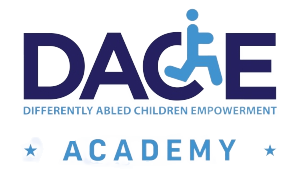
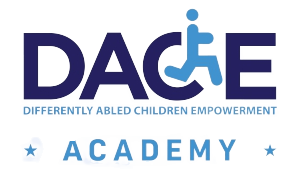
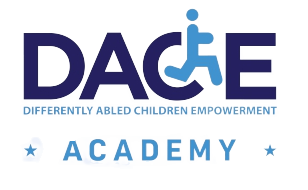
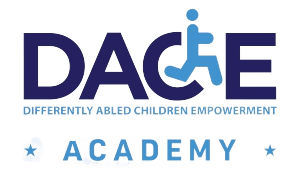
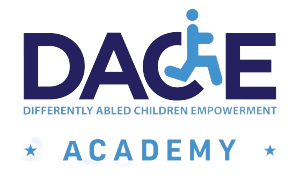
No Comments